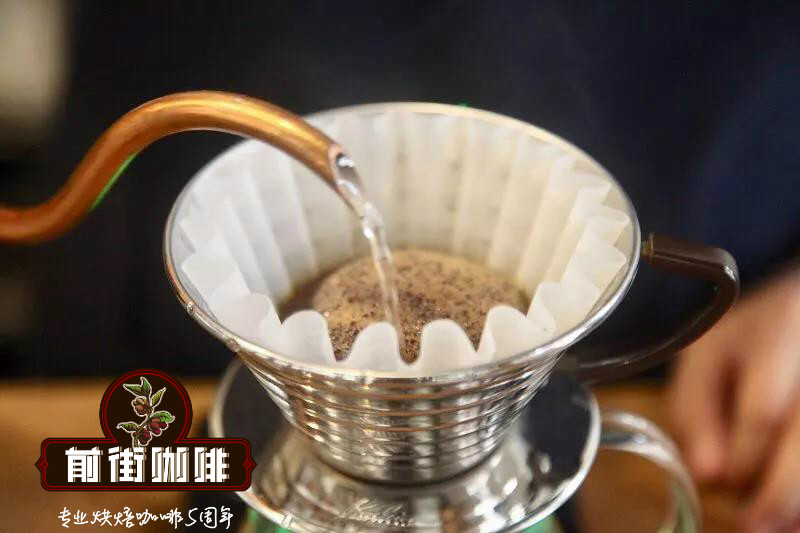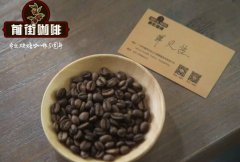What is the best coffee in Venezuela? How do you make Venezuelan caf é guayoyo coffee?

Professional coffee knowledge exchange more coffee bean information please follow the coffee workshop (Wechat official account cafe_style)
Although Venezuela introduced coffee trees from Martinique as early as 1730, coffee production was almost abandoned at the height of the oil industry. Fortunately, coffee cultivation has begun to recover recently, and the original Typica and Borubon coffee plantations have laid the foundation for coffee export.
The best coffee producing area in Venezuela is the southwestern state of Tazira. However, the name Tazira has been widely used in coffee beans across the country. The best coffee names in Venezuela are Montebello in San Cristobal, Miramar in Rubio, Graneza in Emot in Merida, and Ala Graneza in Santa Ana in Tazira. Other premium product names are: Maracaipos, Merida, Trujillo, San Philo Mona and Kukuta. Venezuelan coffee is famous for its delicious and light taste, and it is less sour than traditional coffee, which makes it not only blended but also distinctive. Like coffee with light and delicious flavor and fruit flavor of you, Venezuelan coffee should not be missed.
History of coffee cultivation in Venezuela
The distinctive manor coffee comes from this oil-rich country oil was once considered to be Venezuela's main export product. Although Venezuela introduced coffee trees from Martinique as early as 1730, coffee production was almost abandoned at the height of the oil industry. Recently, coffee plantations have begun to recover, and the original Typica and Borubon coffee plantations have laid the foundation for coffee export. Currently, most Venezuelan coffee is exported to Russia and Colombia, where it is repackaged. Many small newly rebuilt plantations have also begun to export coffee on their own. The coffee industry is not very prominent among the many industries in the country. The best coffee producing area in Venezuela is the southwestern state of Tazira. But the name Tazira has been indiscriminately used for coffee beans across the country.
The best coffee names in Venezuela are Montebello in San Cristobal, Miramar in Rubio, Graneza in Emot in Merida, and Ala Graneza in Santa Ana in Tazira. Other premium product names are: Maracaipos, Merida, Trujillo, San Philo Mona and Kukuta. One of the many plantations in Merida at the foot of the Andes belongs to the Pablo and Pugali families, an ancient farm that has been allowed to downsize. Since taking over the farm in the early 1980s, the Pulido family has harvested coffee from original Bourbon coffee trees and planted new trees to expand the farm. The area around Caracas was also famous for its coffee and production has resumed. In addition, Joan and Andries are located in Turgua. Typica coffee trees are also planted on the Bolton plantation. Venezuelan coffee tastes different from other coffee in Latin America. It is delicious, light and less sour than traditional coffee, which makes it not only blended but also distinctive.
For nearly a century, Venezuelan coffee has been completely overshadowed by oil. At the beginning of the last century, Venezuela's main export is coffee, coffee exports have long occupied the top three in the world. Since the commercial exploitation of oil, black gold has completely covered up the limelight of coffee. Local old people like to say nostalgic that before Colombia starts to grow coffee, we export coffee here. The reality is so cruel that today's Venezuela needs to import coffee from other Latin American countries in order to meet its own consumer needs. Nowadays, coffee lovers around the world talk about Colombian or Brazilian coffee and completely forget the existence of Venezuela.
The main coffee practices and names in Venezuela are: cafe é con leche refers to coffee with 25% and 75% milk; cafe é marr ó n coffee milk is half; cafe tetero is basically milk, only 5% coffee; cafe é negrito is equivalent to express espresso; cafe cerrado is stronger than espresso.
When it comes to the coffee practice peculiar to Venezuela, caf é guayoyo is a kind of black coffee without milk and light flavor. The correct pronunciation of the word is "Guayo", which sounds very musical.
END
Important Notice :
前街咖啡 FrontStreet Coffee has moved to new addredd:
FrontStreet Coffee Address: 315,Donghua East Road,GuangZhou
Tel:020 38364473
- Prev

Is the Sidamo producing area of Ethiopia the same as the Guji producing area? Introduction of coffee in Guji producing area
Professional coffee knowledge exchange more coffee bean information please pay attention to the coffee workshop (Wechat official account cafe_style) Ethiopia, located in central Africa, the territory is mainly a mountainous plateau, known as the roof of Africa, the average elevation of nearly 3000 meters, the Great Rift Valley of East Africa runs through the territory from northeast to southwest. Eritrea, which borders the Red Sea in the north, voted for independence in 1993.
- Next

What are the characteristics of Rwandan coffee, a new coffee producing area? How's the coffee from Rwanda?
For more information on coffee beans, please follow Coffee Workshop (Wechat official account cafe_style) Rwanda Coffee, the most popular African coffee after Kenya and Ethiopia. But unlike the two famous producing countries, it does not have a long history of planting, let alone native varieties everywhere in the wild. This small African country is a fire Phoenix that has been reborn after robbery. Lou
Related
- Detailed explanation of Jadeite planting Land in Panamanian Jadeite Manor introduction to the grading system of Jadeite competitive bidding, Red bid, Green bid and Rose Summer
- Story of Coffee planting in Brenka region of Costa Rica Stonehenge Manor anaerobic heavy honey treatment of flavor mouth
- What's on the barrel of Blue Mountain Coffee beans?
- Can American coffee also pull flowers? How to use hot American style to pull out a good-looking pattern?
- Can you make a cold extract with coffee beans? What is the right proportion for cold-extracted coffee formula?
- Indonesian PWN Gold Mandrine Coffee Origin Features Flavor How to Chong? Mandolin coffee is American.
- A brief introduction to the flavor characteristics of Brazilian yellow bourbon coffee beans
- What is the effect of different water quality on the flavor of cold-extracted coffee? What kind of water is best for brewing coffee?
- Why do you think of Rose Summer whenever you mention Panamanian coffee?
- Introduction to the characteristics of authentic blue mountain coffee bean producing areas? What is the CIB Coffee Authority in Jamaica?

